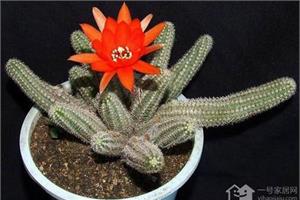Culture method of Cymbidium seedlings Culture method of Orchid in Summer
Cymbidium symbolizes wealth, auspiciousness and happiness, living in the valley but not humble, is the flower language of Cymbidium, so it is more farmed by the majority of people, let's take a look at the breeding method of Cymbidium seedlings, the breeding method of Cymbidium in summer.
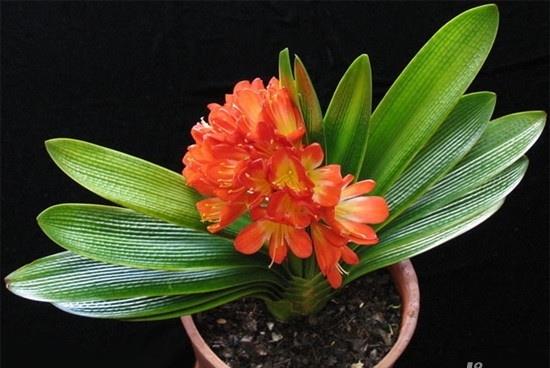
First, the culture method of Cymbidium
The magnolia has strong negative tolerance and likes the moist and cool environment. It is neither cold nor heat resistant. The cultivation of magnolia in summer should prevent exposure to the sun. In winter, the cultivation of Cymbidium should be protected from freezing. When the temperature is below 10 degrees, the growth rate of Cymbidium will slow down. Last winter, when the temperature was not well controlled, it was obvious that Cymbidium almost stopped growing. When the temperature is 15-25 ℃, it is the most suitable temperature for the growth of Cymbidium. Next, let's introduce each detail in detail.
1. Soil
Fertile and loose neutral or weakly acidic rotten soil is the most suitable hotbed for magnolia. The choice of soil is the first key factor for magnolia, and it is also one of the reasons why many people can't raise it well.
2. Lighting
Cymbidium likes semi-shade, so growing orchids indoors requires manual adjustment of the effect of light on it. The leaves of Cymbidium have phototaxis, and if they are placed indoors for a long time, the leaves must be deflected in the direction of the sun. As far as its plant shape is concerned, it is difficult to look sideways at a line and look squarely at the ornamental effect of opening a fan.
3. Temperature
As mentioned in the summary, the most suitable temperature is 15-25 degrees.
4. Watering
Gentleman orchid is a fleshy root, angry and afraid of water stains. In addition, the leaves of Cymbidium have waxy layer, the temperature is low in winter, and the transpiration and evaporation of water are less. Therefore, watering should not be too much, only combined with fertilization watering, to keep the basin soil moist. The soil should not be too dry or too wet. Every time it is watered, it must be thoroughly watered, and some more should be watered after budding. Every 20 days or so, combine watering with fermented bean cake water, fresh fish water and horseshoe water to combine watering and fertilization. Watering should be controlled when the room temperature is low to prevent the basin soil from being too wet, which will cause the rotten roots of the plant to die, but it can not make the basin soil too dry.
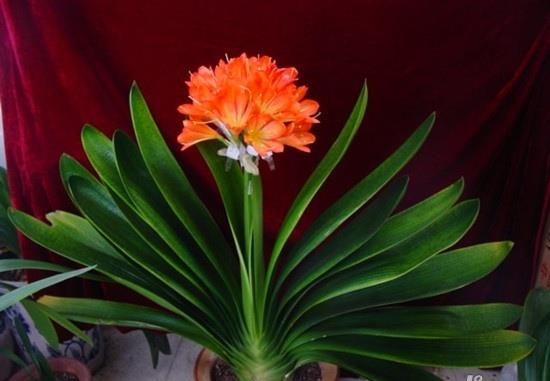
5. Fertilization
When the nourishment of the gentleman orchid is insufficient, there will be a variety of problems, such as narrow new leaves, light color and so on. In terms of nourishment, it is necessary to add the necessary nutrients to it in different seasons, and gentleman orchids generally apply fertilizer in winter. Phosphate fertilizer and potash fertilizer are more beneficial to the cultivation of Magnolia, and less nitrogen fertilizer is applied when topdressing. Be sure to control the amount of fertilization, ha, or it is easy to cause charred symptoms at the leaf tip of Cymbidium, especially in winter, if the leaves are spotted and the roots turn yellow, it is the reason for excessive fertilization. Ha, teach you 2 ways to get home phosphate and potash fertilizer. You can choose eggshell powder and stewed fish water, which are good organic phosphate fertilizers. Bran ash and tobacco ash can be used as potash fertilizer to fertilize magnolia. Three months before flowering, liquid fertilizer was applied mainly with phosphorus and potassium fertilizer to promote its arrows to blossom.
6. Heat preservation
The suitable temperature for the growth of Cymbidium in winter is 15-20 ℃, and it is better not lower than 10 ℃. The temperature should be kept at about 18 ℃ after scurrying, and the temperature difference between day and night should be about 10 ℃, otherwise the flower arrow will blossom if it does not reach a proper height, and it is easy to form a "sandwiched arrow". The magnolia should be moved indoors when the outdoor temperature is lower than 10 ℃ at night. When the indoor temperature is lower than 10 ℃, in addition to covering the surface of the basin soil with a layer of charcoal powder 1 inch thick for heat preservation, the flowerpot should also be placed in the indoor sunny place. When the indoor temperature is very low, cover the film on the flowerpot to raise temperature, but the temperature in the cover should not exceed 25 ℃, if it exceeds, it should be ventilated and cooled in time.
7. Prolong the florescence
Prolong the florescence: the flowering period of Cymbidium is mostly from December to March of the following year. The way to prolong the flowering period is to place the flower in a dark place when it is about to bloom, properly control the watering, and keep the temperature at 8-12 ℃. In this way, the florescence can be extended by 10-20 days.
8. Leaf protection
The leaves are short, wide, thick, green, bright and strong, which are the characteristics of healthy orchids. In addition to providing reasonable fertilizer and water, the leaf surface must be kept clean in order to improve photosynthetic efficiency. One is to wash the leaves regularly and wash or wipe off the dust on the leaves with the same water as the room temperature; the other is to spray fungicides in time to prevent the occurrence of leaf spot, leaf blight and stem rot and ensure that the leaves are green.
9. Time to change the basin
The time and times of toppling and changing soil of Cymbidium depends on the size and season of the seedlings. Like these grown-up orchids, they have to change their soil once a year. The best time to change soil is in spring and autumn, because the orchid grows vigorously at this time and will not affect the growth of the plant. Take out the magnolia from the basin, cut off the rotten roots and the old roots without absorptive capacity, and remove the waste soil. Spray trees inside and outside the leaves to protect trees from disinfection, sterilization, heat preservation and cold. After that, fill it with 2-5 cm thick nutritious soil, grab a handful of soil to add to the inside of the root, and then put the plant in the basin. When filling the nutritious soil into the basin to half the height of the basin, gently press down with your hand along the edge of the basin, so that the roots stand in the basin and are not easy to bend. The key point of soil replacement is to fill the roots with soil. Otherwise, the root has no soil, water, nutrients can not reach the root, easy to cause rotten root, clip arrow (what is gentleman orchid clip arrow). After changing the nutritious soil, pour water thoroughly.
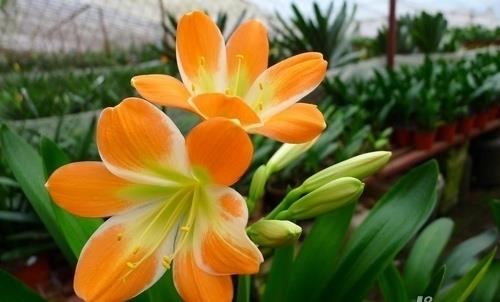
Second, the method of cultivating young seedlings of Cymbidium.
1. The temperature is slightly higher than that of Cheng Lan. 15-30 degrees is the best.
2. Environmental humidity requirements: not very high normal humidity at home.
3, lighting: can not be in direct sunlight, need to shade, put in the south windowsill will not be exposed to the place. Watering cycle should be observed frequently, avoid stagnant water at the bottom of the basin or dry soil. It is a sign that the flowers and soil should be watered as soon as they touch them. The best way for a gentleman's orchid seedling is to spray it with a sprinkler. Spray the nozzle up to the leaf, which has the advantage of not only watering the flowers, but also washing dust and leaving fog beads on the leaf surface to ensure a certain degree of humidity on the leaf surface. Evaporation in the sun can reduce the leaf surface temperature and prevent sunburn.)
4. Soil: the flower soil should not be too thick or too fine, because only one flower soil with too thick flower soil is easy to lodge and too ventilated to damage the roots of seedlings. Also can not be too fine to drain water and breathable effect is easy to cause rotten roots. After the leaves of one-leaf seedlings are complete, the seedlings can be refined and the watering interval can be increased to make the flower and soil slightly drier than normal (not dry through). In winter, the seedlings can also be placed in a colder environment (not less than 5 degrees) for a period of time. This can enhance the stress resistance of the seedlings. Grow healthier.
5, fertilization: seedlings do not need to apply base fertilizer, nor need topdressing fertilizer, can be properly applied foliar fertilizer, fertilizer must be light. The management of seedlings with more than 2 leaves is basically the same as that of big flowers.
Third, the culture method of Magnolia in summer.
Immediately into the midsummer, so friends should pay special attention to the breeding method of magnolia, above has said to you, oh, gentleman orchid is afraid of the sun. So to protect yourself from the sun, there are a few other reasons to pay special attention to:
1. Prevent direct sunlight and do not expose yourself to the sun
The magnolia in summer should cover the strong light all day. Using the oblique light of the sun for a while every morning is enough to satisfy photosynthesis.
2. Prevent high temperature, do not dry
The summer temperature of gentleman orchid is 18 ℃-25 ℃, it is best to put it in an air-conditioned room, or in a balcony shaded and ventilated place. When watering, it is best to use tap water that has been insolated for two or three days, and water once after 6 o'clock every afternoon, do not make the basin soil too dry or too wet.
3. Prevent apprentices from growing, do not apply fertilizer
Summer is the dormant period of Magnolia, stop fertilization, moderate watering, humidity control is an effective measure. If the pot soil is overfertilized or the fertilizer effect is large, the soil in the upper part of the flowerpot should be poured out and mixed with the sand of 1, 3, 2, 2 and 3, which can not only reduce the fertilizer effect, but also play a cooling role.
4. Prevent dust pollution and do not pour dirty water
The leaves of Cymbidium should be kept clean, dipped in water with fine gauze every week, wrung out and gently dabbed once. Pouring dirty water will cause the roots and leaves to rot and turn yellow.
5. Prevent soil consolidation and do not use clay (loess) into the basin. Cymbidium is suitable for cultivation in humus soil with loose, breathable, water-permeable, fertile and PH value of about 7 or 0.
6. Prevent diseases and do not get infected
When changing soil or wiping leaves, the action should be light to prevent the root leaves from breaking and flowing out of juice, causing infection to cause ulceration.
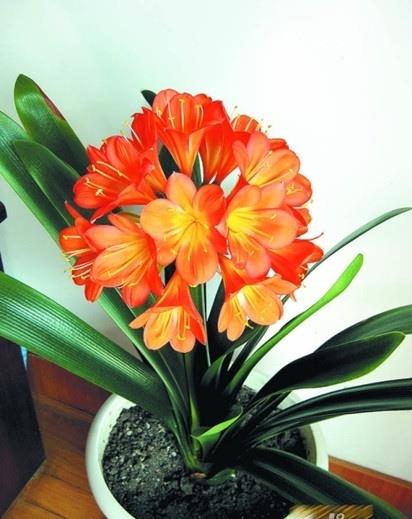
The above introduction of this article, look forward to the need for your assistance, if you have other questions, you can pay attention to the No. 1 home network, for more information.
Second, the method of cultivating young seedlings of Cymbidium.
1. The temperature is slightly higher than that of Cheng Lan. 15-30 degrees is the best.
2. Environmental humidity requirements: not very high normal humidity at home.
3, lighting: can not be in direct sunlight, need to shade, put in the south windowsill will not be exposed to the place. Watering cycle should be observed frequently, avoid stagnant water at the bottom of the basin or dry soil. It is a sign that the flowers and soil should be watered as soon as they touch them. The best way for a gentleman's orchid seedling is to spray it with a sprinkler. Spray the nozzle up to the leaf, which has the advantage of not only watering the flowers, but also washing dust and leaving fog beads on the leaf surface to ensure a certain degree of humidity on the leaf surface. Evaporation in the sun can reduce the leaf surface temperature and prevent sunburn.)
4. Soil: the flower soil should not be too thick or too fine, because only one flower soil with too thick flower soil is easy to lodge and too ventilated to damage the roots of seedlings. Also can not be too fine to drain water and breathable effect is easy to cause rotten roots. After the leaves of one-leaf seedlings are complete, the seedlings can be refined and the watering interval can be increased to make the flower and soil slightly drier than normal (not dry through). In winter, the seedlings can also be placed in a colder environment (not less than 5 degrees) for a period of time. This can enhance the stress resistance of the seedlings. Grow healthier.
5, fertilization: seedlings do not need to apply base fertilizer, nor need topdressing fertilizer, can be properly applied foliar fertilizer, fertilizer must be light. The management of seedlings with more than 2 leaves is basically the same as that of big flowers.
Third, the culture method of Magnolia in summer.
Immediately into the midsummer, so friends should pay special attention to the breeding method of magnolia, above has said to you, oh, gentleman orchid is afraid of the sun. So to protect yourself from the sun, there are a few other reasons to pay special attention to:
1. Prevent direct sunlight and do not expose yourself to the sun
The magnolia in summer should cover the strong light all day. Using the oblique light of the sun for a while every morning is enough to satisfy photosynthesis.
2. Prevent high temperature, do not dry
The summer temperature of gentleman orchid is 18 ℃-25 ℃, it is best to put it in an air-conditioned room, or in a balcony shaded and ventilated place. When watering, it is best to use tap water that has been insolated for two or three days, and water once after 6 o'clock every afternoon, do not make the basin soil too dry or too wet.
3. Prevent apprentices from growing, do not apply fertilizer
Summer is the dormant period of Magnolia, stop fertilization, moderate watering, humidity control is an effective measure. If the pot soil is overfertilized or the fertilizer effect is large, the soil in the upper part of the flowerpot should be poured out and mixed with the sand of 1, 3, 2, 2 and 3, which can not only reduce the fertilizer effect, but also play a cooling role.
4. Prevent dust pollution and do not pour dirty water
The leaves of Cymbidium should be kept clean, dipped in water with fine gauze every week, wrung out and gently dabbed once. Pouring dirty water will cause the roots and leaves to rot and turn yellow.
5. Prevent soil consolidation and do not use clay (loess) into the basin. Cymbidium is suitable for cultivation in humus soil with loose, breathable, water-permeable, fertile and PH value of about 7 or 0.
6. Prevent diseases and do not get infected
When changing soil or wiping leaves, the action should be light to prevent the root leaves from breaking and flowing out of juice, causing infection to cause ulceration.

The above introduction of this article, look forward to the need for your assistance, if you have other questions, you can pay attention to the No. 1 home network, for more information.
Related
- Wuhan Hospital Iron Tree Blooming Result Was Instantly Frightened by the Gardener Master
- Which variety of camellia is the most fragrant and best? Which one do you like best?
- What is the small blue coat, the breeding methods and matters needing attention of the succulent plant
- Dormancy time and maintenance management of succulent plants during dormancy
- Minas succulent how to raise, Minas succulent plant pictures
- What are the varieties of winter succulent plants
- How to raise succulent plants in twelve rolls? let's take a look at some experience of breeding twelve rolls.
- Attention should be paid to water control for succulent plants during dormant period (winter and summer)
- Watering experience of twelve rolls of succulent plants
- Techniques for fertilizing succulent plants. An article will let you know how to fertilize succulent plants.


